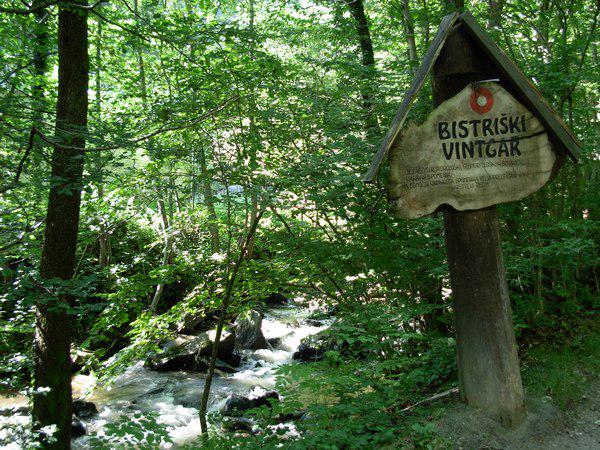
Bistriški Vintgar – the Bistrica Canyon – is not as well-known as many other gorges in Slovenia. But the area, near the town of Slovenska Bistrica, nevertheless rewards visitors with an unusually diverse range of sights, from a Roman quarry to one of Europe’s widest fir trees. But the canyon’s most defining feature is its water.
The Bistrica stream originates at an elevation of 1180 meters and then makes its way down the wooded canyon in a series of cascades, the most remarkable of which is the 20-meter Šum Waterfall. The energy of the stream was once used to power mills, and their ruins can still be seen in the canyon, hidden among the ancient trees.
The dense forest also contains other treasures. Remains of a small fort date back to the late Classical period; a small statue of Apollo was once found in the area. The Church of St. Ulrich, which dates back to the 15th century and was once an important pilgrimage destination, also lies hidden among the trees. Just as remarkable is the Marolt Fir Tree, the oldest and thickest ever discovered in this part of Europe. The majestic tree is no longer alive; it was in a poor shape even before an unexplained fire in 2010 caused it to partially collapse. But even in its current state, the tree is impressive, measuring more than six meters in circumference.
A complete tour of Bistriški Vintgar takes at least five hours. Even though the trail is slippery in places because of the abundance of water, most of it is not challenging, and hikers who do venture to the canyon are rewarded with one of the most primeval landscapes in Slovenia.

































































